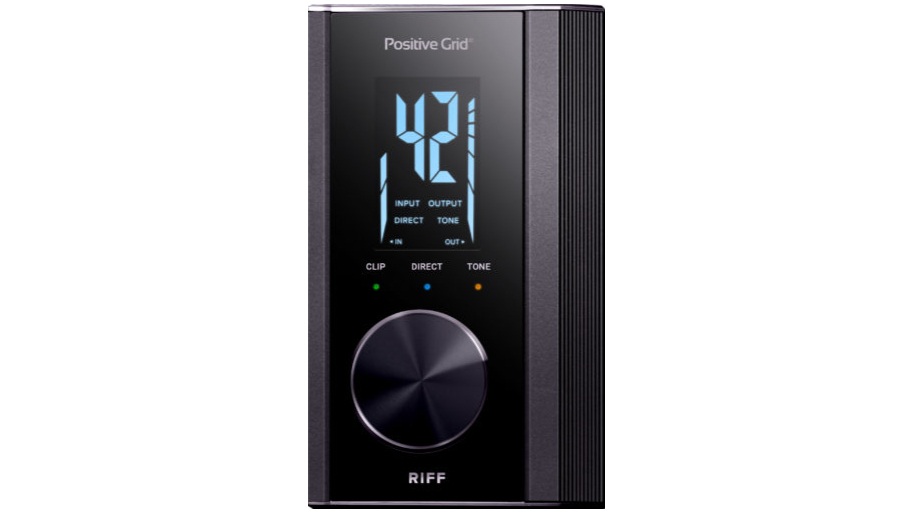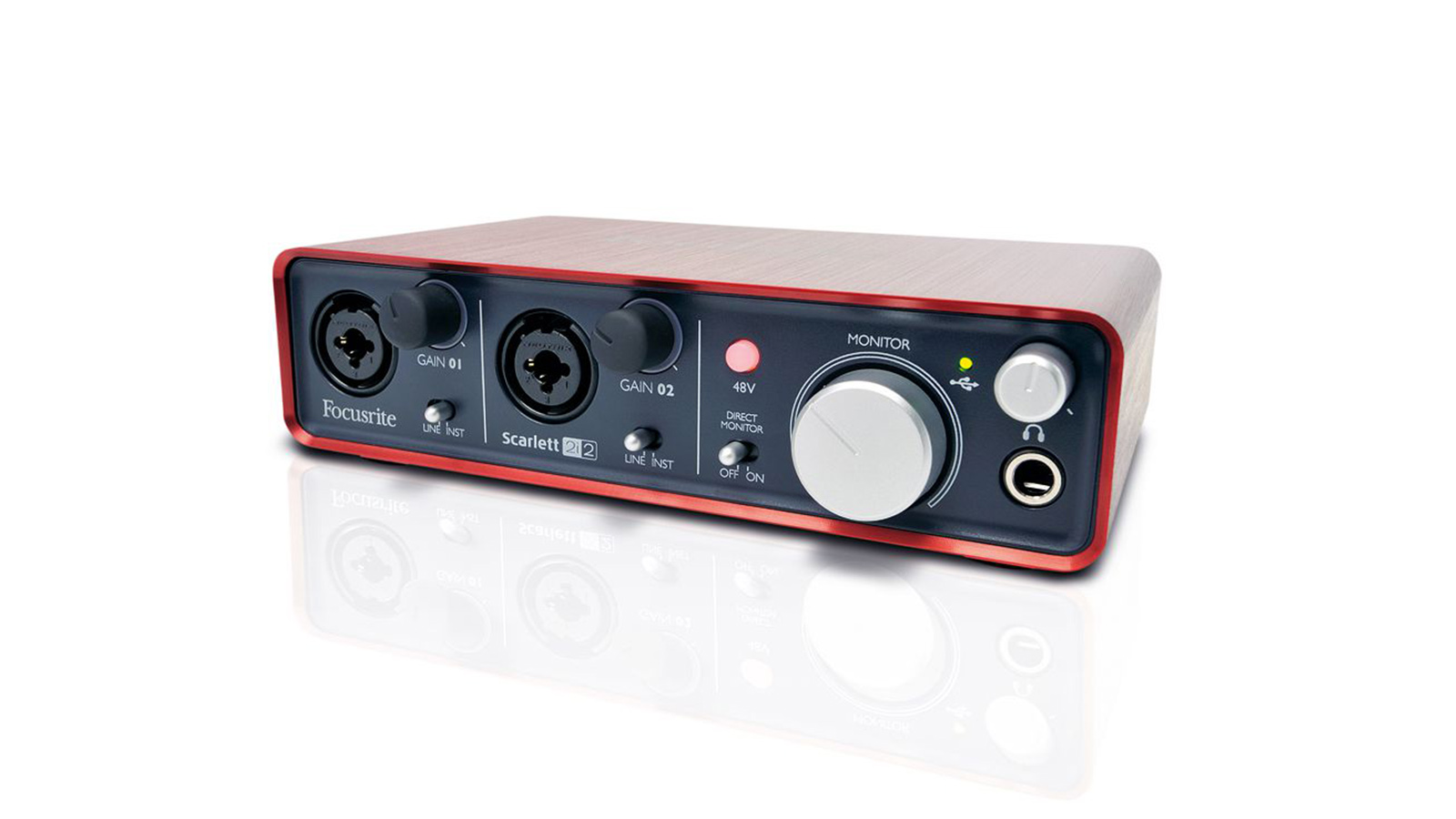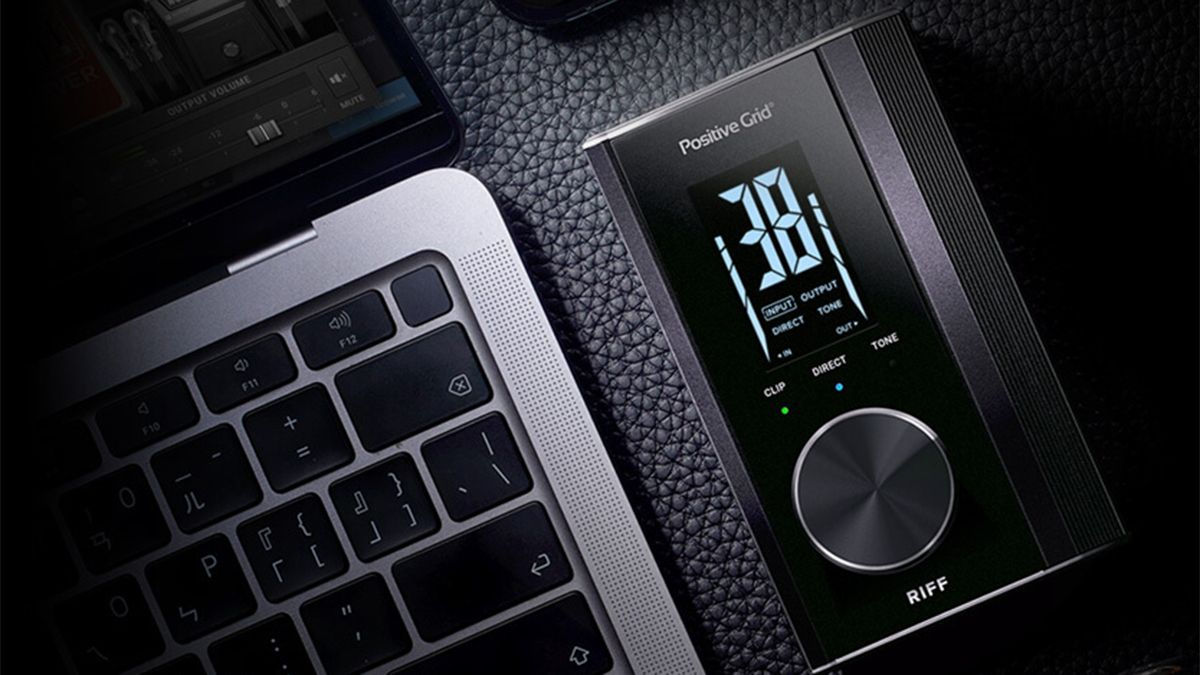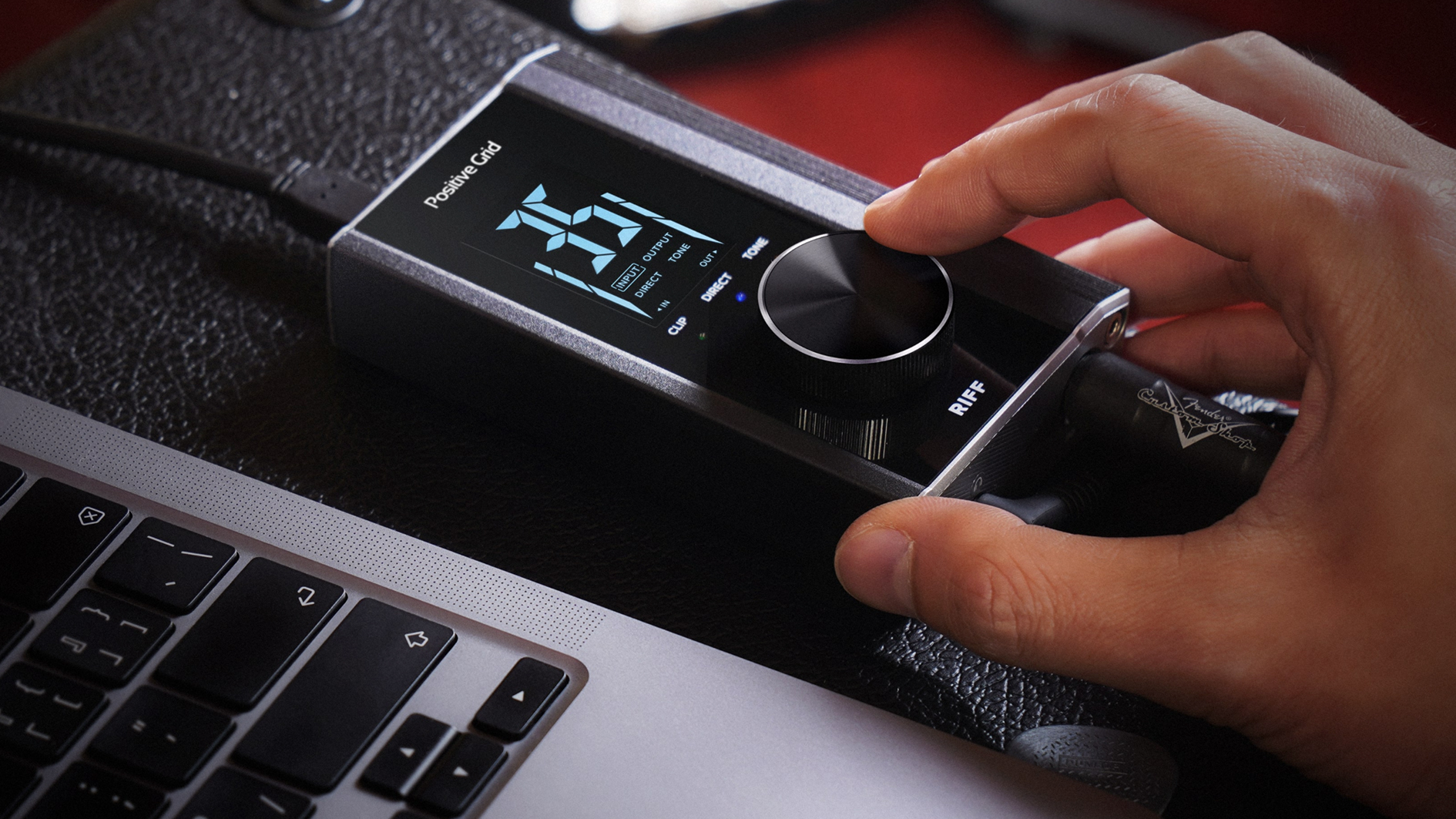MusicRadar Verdict
Don't let its small stature fool you. The Positive Grid Riff is a powerful - and competitively priced - audio interface designed to make the world of recording accessible to every guitarist. Its elegant look and streamlined control layout mean there's no steep learning curve - just plug in and play. When paired with the award-winning Bias FX 2 software, the Riff comes alive and goes from being a well-made entry-level interface to being a revolutionary practice tool, giving you access to any tone you could possibly imagine.
Pros
- +
Simple layout
- +
Solid case
- +
Fully integrated with Bias FX2
Cons
- -
Only one 1/4-inch output
- -
Only for guitar and bass players
MusicRadar's got your back
Positive Grid Riff review: What is it?
It wouldn't be totally out of the question to call Positive Grid trailblazers, especially after they turned the practice amp market on its head in 2019 with the release of the insanely popular Spark. With Positive Grid now turning their sights to the crowded world of budget audio interfaces - with the goal of making them more guitarist friendly - we couldn't help but get excited to see what the guitar tech innovators have up their sleeve.
The Positive Grid Riff is a slimline USB audio interface developed with electric guitar or bass players in mind and can be fully integrated with their award-winning amp and effects software, Bias FX 2. Now, guitar-focused interfaces aren't anything new - with the likes of the IK Multimedia Axe I/O Solo and iRig HD 2 being very popular options - but the Riff does seem to pack a whole lot into its miniature case.
The rugged metal enclosure houses a single 1/4-inch instrument input as well as a single 1/4-inch line-level output and 1/8-inch headphone output.
The oversized control knob located on top of the interface allows you to adjust various parameters of the Riff, from the input and output levels, direct monitoring level - for zero-latency tracking - and even switch between three preamp emulations. This knob is also fully customizable and can be assigned to perform tasks such as changing amp models within Bias FX 2.
The Riff boasts an impressive 24-bit/96kHz resolution and 113dB dynamic range and even comes with a copy of Bias FX 2 LE and PreSonus Studio One Prime recording software.

Positive Grid Riff review: Performance & verdict
Our first thought while unboxing the Positive Grid Riff is just how good it looks. We got the all-black version - although red, green and blue variants are available - and we can’t help feel Steve Jobs would approve of its sleek, simple design. The interface has a reassuring weight and certainly feels well-made, while the bright screen is clear and easy to read.
In the box, the Riff comes with two USB cables, a micro USB to USB-A, which is used for plugging the Riff into your computer and a micro USB to Lightning cable, so you can plug the interface directly into an iOS device. You also get a free copy of BIAS FX 2 LE software.
Want all the hottest music and gear news, reviews, deals, features and more, direct to your inbox? Sign up here.
Using the Positive Grid Riff with Bias FX 2
Now, setting up the Riff with Bias FX 2 couldn't have been easier, once both are installed, Bias will find the interface automatically and set the Riff as your audio device. The software will then prompt you to go through the Auto Gain process, which, as the name suggests, will automatically adjust the gain level based on the output of your guitar's pickups - a very handy feature. Although we have to mention that this did take three attempts to get right - the first two times, it set the gain way too high. We did experience a little latency when first using the Riff, but this is easily sorted by adjusting the buffer size located in the settings. Once this was lowered, we had no more latency problems.

Focusrite Scarlett 2i2: If you want to record vocals as well as guitar then you really can't go wrong with the Scarlett 2i2, which has to be one of the most popular audio interfaces on the market!
SSL 2+ audio interface: If you are a little more serious about recording, then you may want to check out the SSL 2, which offers truly outstanding audio quality.
IK Multimedia Axe I/O Solo: For those looking for another guitar-focused interface - that does have a mic input - the Axe I/O Solo is worth checking out.
While some may think the one knob layout would be limiting, in actual fact, it's incredibly intuitive and satisfying to use - this is aided by the clearly labelled parameters on the screen. Simply click down to switch between Input, Output, Direct or Tone and rotate the knob to adjust the level. Now, one of the other big selling points of this humble little interface is how well it interacts with the Bias software, and even this is a fairly straightforward affair. To access Custom Mode, you simply long-press the control knob for two seconds. This will then allow you to assign one of the following commands to the knob; Preset Selection, Signal Chain Activation, Metronome, Preset Scene and Preset BPM Control.
As previously stated, the Riff has a designated headphone out and a single 1/4-inch output on the back. Now, while this will be more than enough for most users, I can't help but long for two 1/4-inch outputs to be included, as this would make it easier to route the signal to a set of studio monitors. Of course, we completely understand why this feature was omitted, as real estate on this minuscule interface is limited, but still, dual outputs would have made this a more usable interface for mixing outside of headphone land.

Recording with the Positive Grid Riff
So we've covered how the Riff works as a stand-alone device with Bias FX 2, but how does it hold up as a recording interface? Well, in short - pretty great. For the purposes of this review, we used the Riff in conjunction with Pro Tools, and the results were fantastic. Pro Tools had no problems at all locating the Riff as an audio device - that said, you do need to have the correct driver installed if you are running a PC, which you can download from the Positive Grid help centre - and there were absolutely no latency problems at all!
The sound was clean, clear and totally devoid of any pops or clicks - what more do you need from an audio interface? In addition, the Tone mode built into the Riff really comes into its own while recording, as you can switch between three different preamp modes - mild compression, full range and mid boost. We found this feature very convenient when switching between guitar styles.
Conclusion
If Positive Grid were setting out to create the ultimate audio interface for guitar players, then they most definitely have succeeded. While this sleek, no-nonsense interface won't get the hearts racing of experienced home producers or recording fanatics, it certainly will excite guitarists or bassists looking to get into home recording. Its uncomplicated layout and ease of use mean that players with zero recording experience will be able to set it up in minutes - couple that with the Bias software compatibility, and you have a very powerful tool that will revolutionize how many players will practice and record going forward.
Positive Grid Riff review: Hands-on demos
Positive Grid
Specifications
- Sample/bit rate: 24bit / 96kHz high-resolution audio
- Dynamic Range: 113dB
- Frequency Response: 20 ~20k
- Input: 1/4" x1 (mono, for instrument)
- Output: 1/4“ x 1 (Line level stereo, output impedance: 47k ohm), 1/8“ x1 (Headphone, stereo, compatible impedance: 16~64 ohm)
- Weight and dimensions: 156g, 0.85" x 2.16" x 3.47" (2.16 cm x 5.49 cm x 8.81 cm)
- Device Compatibility: Windows 8 or later/macOS 10.11 or later/iOS 11 or later
- Contact: Positive Grid

I'm a Senior Deals Writer at MusicRadar, and I'm responsible for writing and maintaining buyer's guides on the site. As part of my role, I also scour the internet for the best deals I can find on gear and get hands-on with the products for reviews. My gear reviews have been published in prominent publications, including Total Guitar, Guitarist, and Future Music, as well as Guitar World.com. I've also had the privilege of interviewing everyone from Slash to Yungblud, as well as members of Sum 41, Foo Fighters, The Offspring, and many more.
In a previous life, I worked in music retail, selling everything from digital pianos to electric guitars. I'm also a fully qualified sound engineer who holds a first-class Bachelor's degree in Creative Sound Production from the University of Abertay.
